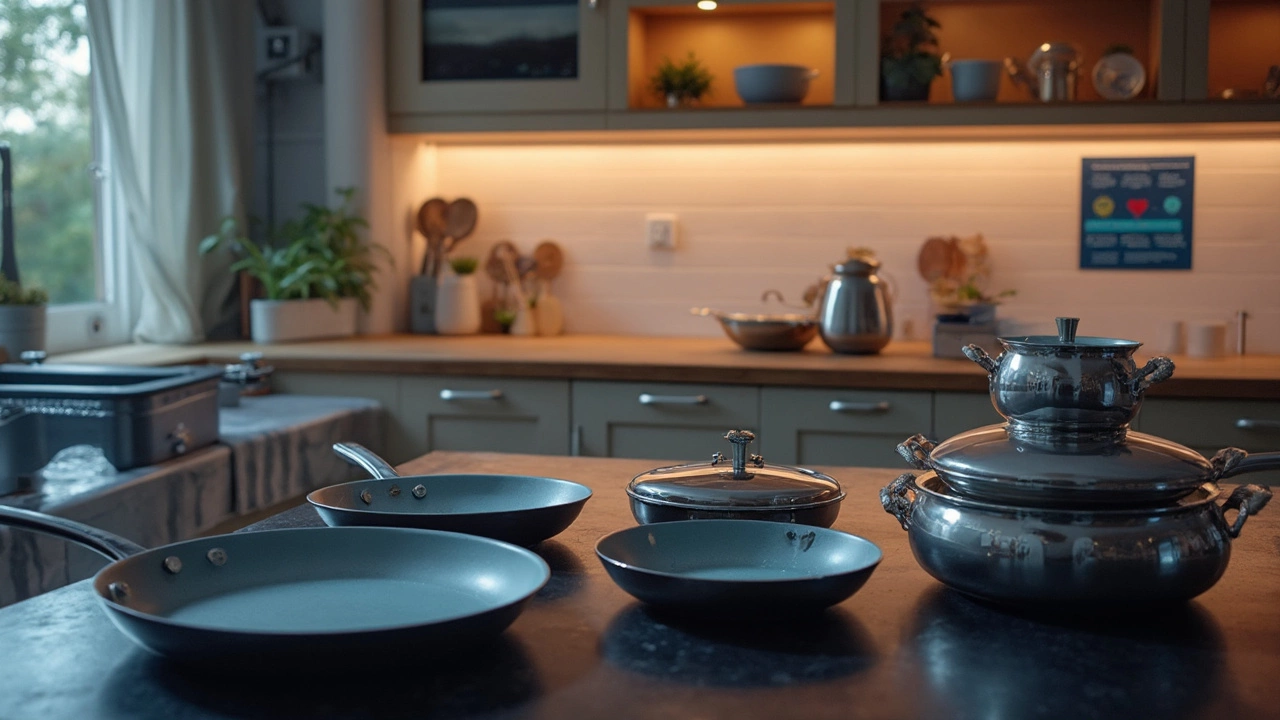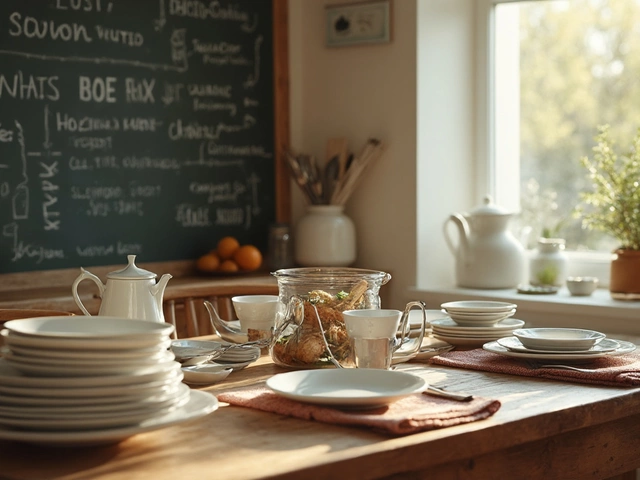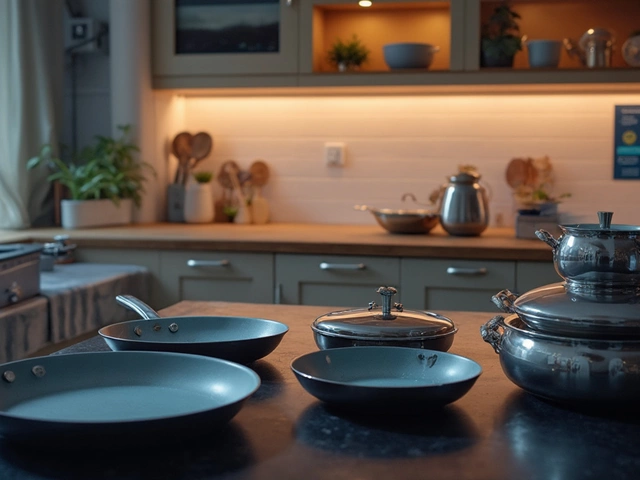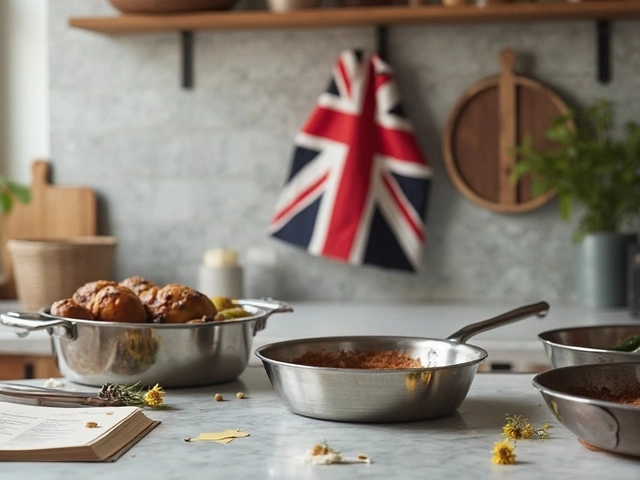Remember when non-stick pans were the kitchen superstars everyone loved? They made flipping pancakes and sautéing veggies a breeze, with hardly any oil. But then whispers about their safety started swirling around. Now, in 2025, it’s time we actually sort out what's true and what’s not.
First off, here's the basics: non-stick coatings, like Teflon, have been under scrutiny for potential health risks mainly because of a compound called PFOA. For those not in the know, PFOA was used in the manufacturing process of traditional non-stick coatings. Back in 2006, a big enough deal was made about it that manufacturers agreed to phase it out by 2015. So, the pans you buy today? They’re mostly PFOA-free.
With new pans rolling out each year, it's worth knowing that brands are now pushing for safer, alternative coatings. Ceramic-coated pans, for instance, have popped up as a popular choice, claiming to offer non-stick magic without the chemical baggage. But do these alternatives really hold up and, more importantly, keep us safe?
- The Evolution of Non-Stick Pans
- Health Concerns: Fact vs. Fiction
- Materials to Watch Out For
- Tips for Safe Cooking
The Evolution of Non-Stick Pans
Once upon a time, back in the 1930s, non-stick cookware wasn’t even a thing. Fast forward to the mid-20th century, and suddenly everyone wanted a piece of it. The magic ingredient? Teflon. This slick coating, known scientifically as PTFE (polytetrafluoroethylene), hit the scene in 1954 when a French engineer slapped it onto aluminum pans. Instant kitchen game-changer!
These early non-stick pans came with a few issues, though. Overheating them led to fumes that weren't exactly kitchen-friendly, especially if you've got pet birds. In the mid-2000s, the whole saga hit a new chapter when researchers raised eyebrows over a manufacturing chemical called PFOA (perfluorooctanoic acid). For years, it had been used to produce PTFE, and concerns over its potential health impacts stirred up quite the pot.
Reacting to the growing criticism, manufacturers decided to phase out PFOA by 2015. And so, the evolution of non-stick pans took another step forward. Now, new coatings keep chlorine at bay and don’t mess with your non-stick expectations.
Beyond Teflon: New Age Cookware
In our pursuit to tread lightly in our health-conscious era, brands started experimenting with ceramic and hard-anodized aluminum. Ceramic-coated options sprouted up promising a chemical-free cooking experience, yet keeping that easy-food-release charm. Around the same time, hard-anodized aluminum, valued for its durability, found love from chefs looking for a balance between safety and performance.
The transition from traditional Teflon to these new materials didn’t happen overnight. Yet, by the 2020s, these pans had spread across kitchens worldwide, challenging the old assumption that non-stick equals unhealthy.
Choosing the Right Pan Today
So, what's the takeaway for today's home cooks eyeing new cookware? Keep in mind that labels, like PFOA-free, don't spell out the whole story. Read up on what the coating is made of, check out user reviews, and weigh all options. Gone are the days when non-stick had only one face. Whether it’s ceramic, hard-anodized aluminum, or trusty old Teflon with upgraded safety standards, non-stick cookware offers something for everyone chasing simple and healthy meal preps.
Health Concerns: Fact vs. Fiction
Alright, let's break down the chatter around non-stick pans and whether they're lurking hazards in the kitchen. The big player in the past controversy was a chemical known as PFOA, which was used in the production of the old-school non-stick coatings like Teflon. The scare was genuine, but mostly around the manufacturing process itself.
Non-Stick Today: The Real Deal
Modern non-stick cookware is generally considered safe for home use, as today's pans are labeled to be PFOA-free. This label means these pans don't contain the aforementioned bad guy when they hit your kitchen. The cookware industry's gotten wise, moving towards more eco-friendly materials.
Common Myths Debunked
- Non-stick pans are unsafe when scratched: While it's annoying to see those scratches, they're unlikely to cause health issues. Just don’t eat the coating (obviously!).
- All non-stick pans release toxic fumes: True only at super high temps (like 500°F/260°C). Regular cooking temps are usually too low to produce harmful fumes.
Research and Reports
Recent studies have shown that when used under normal cooking conditions, non-stick pans don't release harmful levels of chemicals. A lot of the old fear comes from tests done where pans were overheated, which doesn’t reflect your typical stir-fry dinner prep.
Here's a bit of science for the curious: a test in 2020 saw non-stick pans enduring over 500 hours of cooking simulations without any notable health risk. Pretty comforting, right?
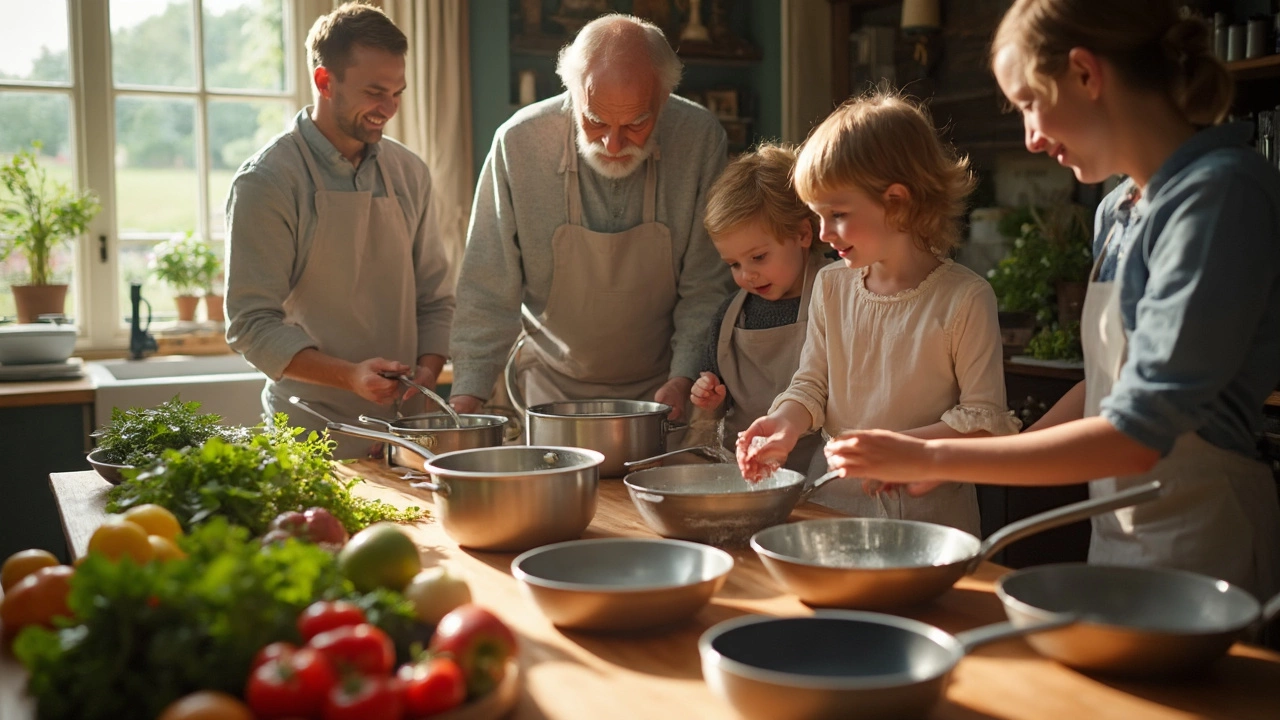
Materials to Watch Out For
Let's dive into the nitty-gritty of what's lurking in some non-stick pans. While the good news is that manufacturers are taking strides towards safer options, there are still materials and coatings to keep an eye on.
PTFE and PFOA
The original non-stick coatings were made from PTFE (you know it as Teflon) and often involved a chemical called PFOA during production. Now, most cookware today claims to be PFOA-free, which is a win for everyone. But PTFE is still pretty common. The key thing is, PTFE in itself isn’t harmful as long as you follow one golden rule: don't overheat it. Exposing these pans to super high temps can cause the coating to break down, potentially releasing fumes that aren’t great to inhale. So, if you’re one to leave your pan on the stove for a bit too long, maybe it’s time to swap it out for a more robust option.
Ceramic Coatings
You’ve probably come across those newfangled ceramic-coated pans, right? Marketed as a healthier alternative, these pans steer clear of PTFE and PFOA. But just a heads up: not all ceramic coatings are created equal. Some can still chip or wear off faster than you’d like. If you’re going this route, look for brands that emphasize longevity and scratch resistance.
Aluminum Cookware
Aluminum pans are lightweight and good for even cooking. But bare aluminum reacts with acidic foods. Many of these pans are anodized to protect against this, but a worn coating could end up in your food, so keep an eye out for scratching and pitting.
Quick Tips for Your Kitchen
- Stick to medium heat when using non-stick cookware.
- Use wooden or silicone utensils to prevent scratching.
- Don’t put non-stick pans in the dishwasher – the harsh detergents can chip coatings.
- Replace pans as soon as you notice peeling or discoloration.
The key takeaway? Opt for pans made from safe materials, and treat them with love to make sure they last while keeping your meals safe and healthy.
Tips for Safe Cooking
Using non-stick pans can be perfectly safe if you play it smart. First things first, watch that heat. Overheating is one of the quickest ways to ruin both your non-stick pans and your dinner plans. Most non-stick coatings can start to break down at high temperatures, releasing potentially harmful fumes. Keep it low to medium when cooking, and you'll be good to go.
Choose Your Tools Wisely
Another tip? Be gentle with your tools. Metal utensils can scratch up those non-stick surfaces, leading to peeling and a less effective pan. Opt for silicone, wood, or plastic—these are much easier on your cookware.
Keep It Clean
When it comes to cleaning, steer clear of abrasive scrubbers. A soft sponge or dishcloth with some warm soapy water usually does the trick. If you've got something stubborn stuck on, let it soak for a bit; resist the urge to scrape at it ruthlessly.
Know When to Let Go
All good things come to an end, and the same goes for your non-stick pan’s lifespan. If it’s scratched beyond belief or food's sticking like no tomorrow, it might be time for a replacement.
Finally, be conscious of what’s in your pan. Even though most modern non-stick pans are PFOA-free, it doesn't hurt to double-check the fine print and ensure no harmful chemicals lurk beneath that shiny surface. Sticking to reputable brands that prioritize safety can also make a world of difference. By following these tips, you can enjoy the convenience of non-stick cooking without losing peace of mind.
